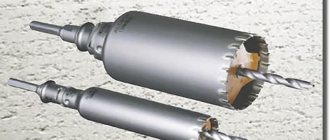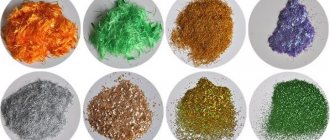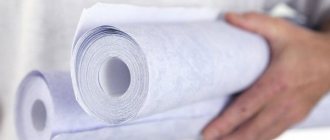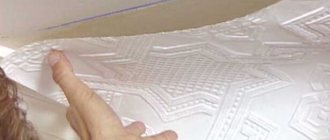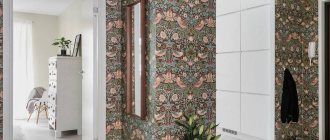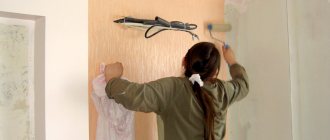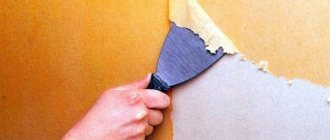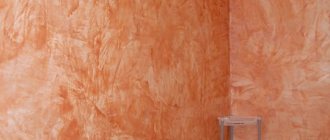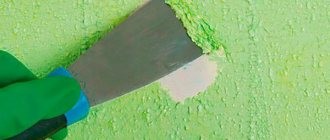Among the huge number of finishing materials for walls that are offered today by various construction stores, textile wallpapers occupy a special place: they stand out for their many advantages and the ability to create a truly stunning interior for almost any room in a house or apartment. One type of this finishing material is seamless wallpaper.
Seamless wallpaper: advantages and features
The peculiarity of seamless wallpaper is the absence of seams. In general, there will be only one seam, so when planning the arrangement of furniture, it is worth making sure that it is covered. Such wallpaper is sold in rolls 3 meters wide and 50 meters long, but they have to be pasted horizontally. The main advantages include:
- Soft to the touch.
- No seams throughout the room.
- Embroidery with threads allows the wallpaper to shimmer depending on the impact of the rays, making it look beautiful.
- Environmentally friendly material, and some options are endowed with antiseptic properties.
- They do not fade from the sun, and jacquard models are antistatic.
- Good sound insulation and thermal insulation properties.
- Easy maintenance during use.
- Surface treatment allows us to talk about the strength of the material.
To decorate a room with such wallpaper, you have to spend money. But during the installation process you won’t have to measure and trim the wallpaper from the roll every time.
Advantages
Like all finishing materials, 3D wallpaper has its own characteristics, advantages and disadvantages.
Among the advantages it is worth noting the following:
- do not require special care;
- easy to clean;
- wear-resistant and moisture-resistant;
- do not burn out;
- are not deformed;
- easy to glue;
- do not cause harm to health;
- fits well on walls and other surfaces.
The disadvantages include the following:
- the high cost of three-dimensional canvases;
- require careful preparation of the walls before gluing (any unevenness and roughness can affect the 3D effect);
- certain requirements for the size of the room;
- made to order (waiting time);
- impossibility of restoration if damaged.
It should be noted that LED and luminous varieties can harm a person with an unhealthy psyche.
Application area
Since the material provides good sound insulation, it is ideal for the bedroom. The room becomes not only beautiful, but also cozy. A wide selection of colors allows everyone to make the necessary choice.
Since there is no resistance to high humidity, you should not use such wallpaper for the kitchen, bathroom or shower. In addition, they easily absorb foreign odors. It is also not suitable for the corridor, because it can be subject to mechanical stress and abrasion.
Recommendations for selection
In order to choose the right 3D wallpaper for walls, you must follow certain rules.
- The color scheme and style of the image must correspond to the overall design concept of the room.
- The picture should be striking; it is not advisable to block the picture with various shelves, cabinets, etc. An accent wall does not require additional decor.
- It is necessary to properly think about which wall the 3D photo wallpaper will be placed on. To achieve the greatest effect, it is better to choose the wall that is farthest from the entrance, so that there is as much free space as possible between the wall and the viewer.
- For modern styles, wallpapers depicting geometric shapes or abstractions are most suitable. Clear panoramic paintings are more suitable for the classical style.
- 3D wallpaper looks very good in combination with wood panels and moldings.
- For small rooms, wallpaper with a perspective image is better.
- It is not recommended to glue wallpaper with a glossy surface to the wall opposite the window. Due to sun glare, the three-dimensional picture may be distorted.
- If zoning is done using 3D pictures, then the images must fully correspond to the theme of the individual zone.
- 3D wallpaper looks expensive and beautiful only in combination with high-quality furniture, expensive finishing materials, suspended ceilings and proper lighting.
Varieties of seamless wallpaper by texture and components
The surface is fabric, but the base can be different:
- Paper.
- Fabric.
- Non-woven.
Regardless of the type of base chosen, the material is environmentally friendly. The front part is created from any type of fabric. In recent years, jacquard models have become popular. Due to its strength, the material allows you to hide possible surface defects.
There are rolls with foam backing. This base contains 100% dralon or polyester. Dralon protects the canvas from glue penetration. Plasticity simplifies the work with gluing and stretching the fabric.
Varieties of seamless fabrics
Fabric wallpaper of this type can be made in various variations: from silk, jacquard, linen and other threads. This variety of textures also gives rise to an abundance of possible colors. Plain, light, white and beige, bright and unusual - the seamless texture allows you to create unique design options. For example, silk wallpapers are most often decorated with images of fantastic birds and flowering trees, which will look great if your interior is made in an oriental style.
For those who cannot decide on the choice of ready-made colors, the designers have developed seamless wallpaper for painting. With such wallpaper you can not only create your own interior, but also change it whenever you wish.
Seamless children's fabric wallpaper has bright and cheerful colors and also perfectly retains heat in the room and protects from extraneous sounds. Such wallpaper can be used both in a room for children and in the rooms of older children.
How to hang wallpaper on a wall
A vertically installed roll, unwinds and fastens around the perimeter. But the cutouts for doors and windows are made last, so that later the edges can be covered with trim and decorative corners. Two installation options are used:
- the canvas is glued to a smooth, dry surface;
- By fitting it parallel to the wall, you do not have to carry out work on preparing the wall. The density of the fabric allows you to smooth out defects.
Is it possible to glue it yourself?
Pasting seamless wallpaper is a labor-intensive process that will take a lot of time, and you can’t do it without certain skills. Imagine how inconvenient it is to roll a huge three-meter roll and glue the canvas at the same time, so you should cancel self-gluing.
Since wallpaper is not made from a cheap building material, a mistake in the gluing process can be costly. Therefore, it is so important to entrust this process to experienced craftsmen.
Sequence of work
The craftsmen adhere to the following order of work:
- Unpack the roll and measure the actual footage, which may differ from what is stated on the package. Pasting is carried out from floor to ceiling in one roll. No cutting, everything is glued in one piece without inserts.
- Prepare the room, remove skirting boards, trim, and baguettes.
- Treat sections of the walls with glue and gradually paste the canvas. Experts recommend processing one linear meter at a time.
- Plastic slats or clips will allow the material to better adhere to the wall.
- To ensure that the pattern does not float, but is even, it is important to check the verticality of the canvas during the pasting process. A laser level is used for this.
- After pasting, when the wallpaper has dried a little, you need to cut holes for doors and windows. Leave the material under the ceiling and near the side junctions.
- Install skirting boards, platbands and baguettes.
How to glue to disguise joints
Before learning how to properly hide joints, let's take a quick look at why they may still be visible. It should be immediately noted that there may be several reasons for this:
- The adhesive solution was applied incorrectly and when gluing, excess of it got onto the front side of the wallpaper.
- When applying glue, the edges of the wallpaper sheets were not coated sufficiently or not coated at all.
- After applying the adhesive composition, the canvas swollen somewhat and increased in width (usually by 3–5 mm), and after drying, on the contrary, it shrank, forming a gap that now needs to be decorated.
It must be said that recently, unlike the Soviet era, a significant part of the wallpaper sold in stores is intended for butt sticking, not overlapping. This is what allows the seams to be made invisible even from a close distance, especially in cases where the design or pattern on the adjacent canvases is correctly selected.
The correct approach to preparing the wall surface is important. You can start gluing only after the wall has been processed according to all standards, that is, puttied, leveled and treated with a primer. You can read about how to properly prepare walls before you start wallpapering in this article.
Attention! It should be understood that wallpaper is divided into heavier and thicker, on the one hand, and lighter, on the other. Accordingly, each of these varieties has its own gluing features and inherent performance characteristics.
Such types of wallpaper as vinyl are quite heavy, so gluing them, firstly, is not so easy, and secondly, the process itself takes quite a lot of time. On the other hand, they have a number of significant advantages. One of them is that they do not shrink after the glue dries. This helps avoid the formation of tears at the seams. By using vinyl sheets, you no longer have to figure out how to hide the separated joints.
Know! In order to prevent the seams between the wallpaper from coming apart, experts advise using a special small roller. With its help, the junction of the sheets is ironed additionally after gluing.
Roller for smoothing joints
As for gluing non-woven wallpaper, you need to buy a special type of glue for it. At the same time, a pleasant “bonus” when carrying out the work will be that when gluing them, it is enough to apply a layer of glue only to the sheet itself, without coating the wall. By the way, this type of wallpaper is often glued before painting.
As for paper wallpaper, gluing it is not so easy. Everything is explained by their thinness and susceptibility to getting wet by glue. In such cases, it is important not to overdo it with the amount of adhesive solution applied, since if there is an excess of it, the paper wallpaper may shrink when drying. Unraveling seams, which are so unpleasant for the eyes, will appear in these places.
Tips and tricks
The walls that will be covered must be smooth with highlighted corners, which will allow you to achieve perfect symmetry. The work uses saturated glue. With a non-woven base, the adhesive is applied to the wall. It is important that nothing gets on the front side. If this happens, eliminate the defect with a damp cloth.
- Start work from a “blind” corner or from the area where massive furniture will be installed.
- Use special glue.
- Fix the material with slats from below and above, pull the canvas tightly to the wall.
- Particular attention is paid to the transition from one wall to another, taking into account the angles.
- A rubber roller is useful for smoothing wallpaper.
Disadvantages of seamless wallpaper
- Such wall decorations are very expensive - and they are quite difficult to buy in any store. The high cost is justified by complex manufacturing techniques and expensive fabrics as raw materials.
- When used, one seam remains - and it is very difficult to reduce it to nothing, only to hide it behind furniture. Another option is to use piping. This is a special fabric line used for framing both wallpaper joints and various kitchen cabinets.
- The fabric is not cut at all. Any attempts to use scissors will end in ugliness and nothing more.
- Another drawback is that the entire canvas needs to be replaced. It will not be possible to re-glue only part of it - simply because of the sloppy seam and heavy cutting.
- It is also worth paying attention: if damaged, purchasing a new canvas is not always the solution. The point is that in different batches the color schemes sometimes differ by a tone or two, which doesn’t look quite right. Therefore, carefully monitor how your goods are transported and treat the finished product with care.
The choice always lies with those who know a lot about their purchases. Therefore, we advise you to carefully study all aspects and benefits of each expenditure. This also applies to the interior of the walls: the more effort is put into creating comfort, the more pleasant the final result will be. And it’s not always worth saving on time or money: be smart about it.
AlinaAuthor of the article
Did you like the article?
Share with your friends:
Care
Seamless wallpaper needs to be treated with care. By providing proper care, you will be able to extend the life of the product. Sometimes just vacuuming the material is enough. Some people use a dry sponge or rag, or a soft brush.
Since manufacturers treat the outer layer with special antistatic compounds, which protects it from dirt and dust, extensive care is not required. Do not wet clean or soak a cloth in detergents. The exception is material treated with a special Teflon Protector method. Contaminated areas can be easily cleaned with a damp sponge.
Seamless wallpaper looks beautiful and unique and will definitely impress your guests. They should be used for a bedroom or living room, where the properties of sound and heat insulation will be better demonstrated. Installation should be entrusted to professionals, because the material is intricate, and one defect can be too expensive. But properly glued wallpaper will look beautiful and will last for many years. Maintenance is easy - just wipe with a dry cloth.
How to work with seamless wallpaper
It is better to entrust work with seamless wallpaper to high-level professionals. There are several important points that not all masters know. Firstly, before pasting, you need to remove all the door jambs in the room, and after decorating the walls, install them back. When finishing walls seamlessly, holes are cut in door and window openings.
Secondly, do not allow the slightest contact of glue or moisture on the wallpaper. Otherwise, the entire roll will be hopelessly damaged.
